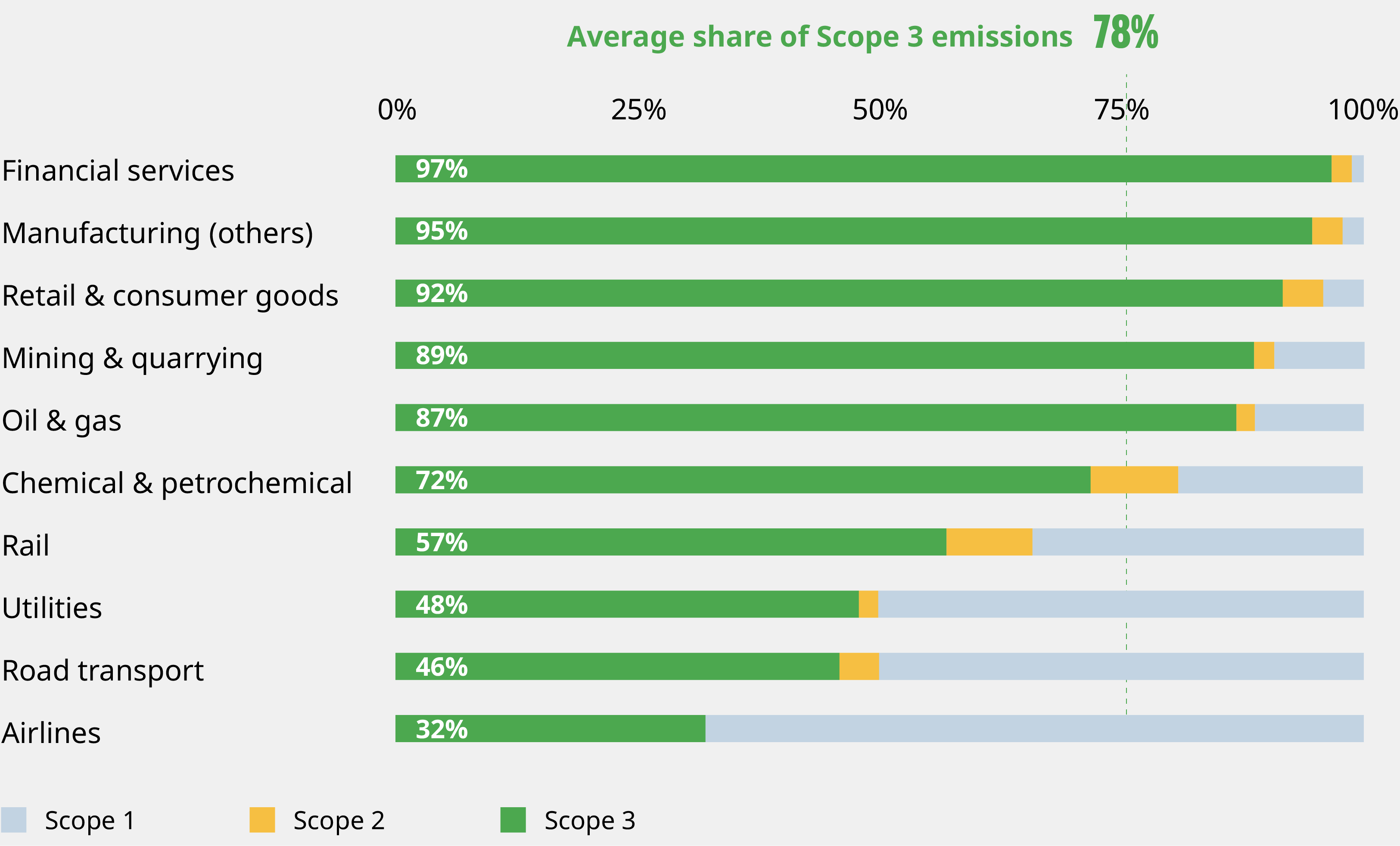Thousands of companies globally have committed to cut their emissions to zero by 2050, but meeting those goals will take significant work, investment, and cooperation. Many of these businesses are already focusing on reducing Scope 1 and Scope 2 emissions, which are driven by their own operations, including direct emissions and those from generating the electricity they consume. But the biggest challenge will be eliminating Scope 3, which accounts on average for 78% of total emissions, according to the Oliver Wyman Forum Climate Action Navigator.
Scope 3 includes all the other indirect emissions in the value chain — both upstream throughout the supply chain and downstream from customers’ usage of products. Reducing upstream emissions requires understanding suppliers’ current and future emissions and, if ambitions are not sufficient, then working with them or switching. Reducing downstream emissions could require either redesigning products or educating customers on usage. Either way, companies cannot simply rely on reducing those emissions directly under their control to meet net-zero expectations.


